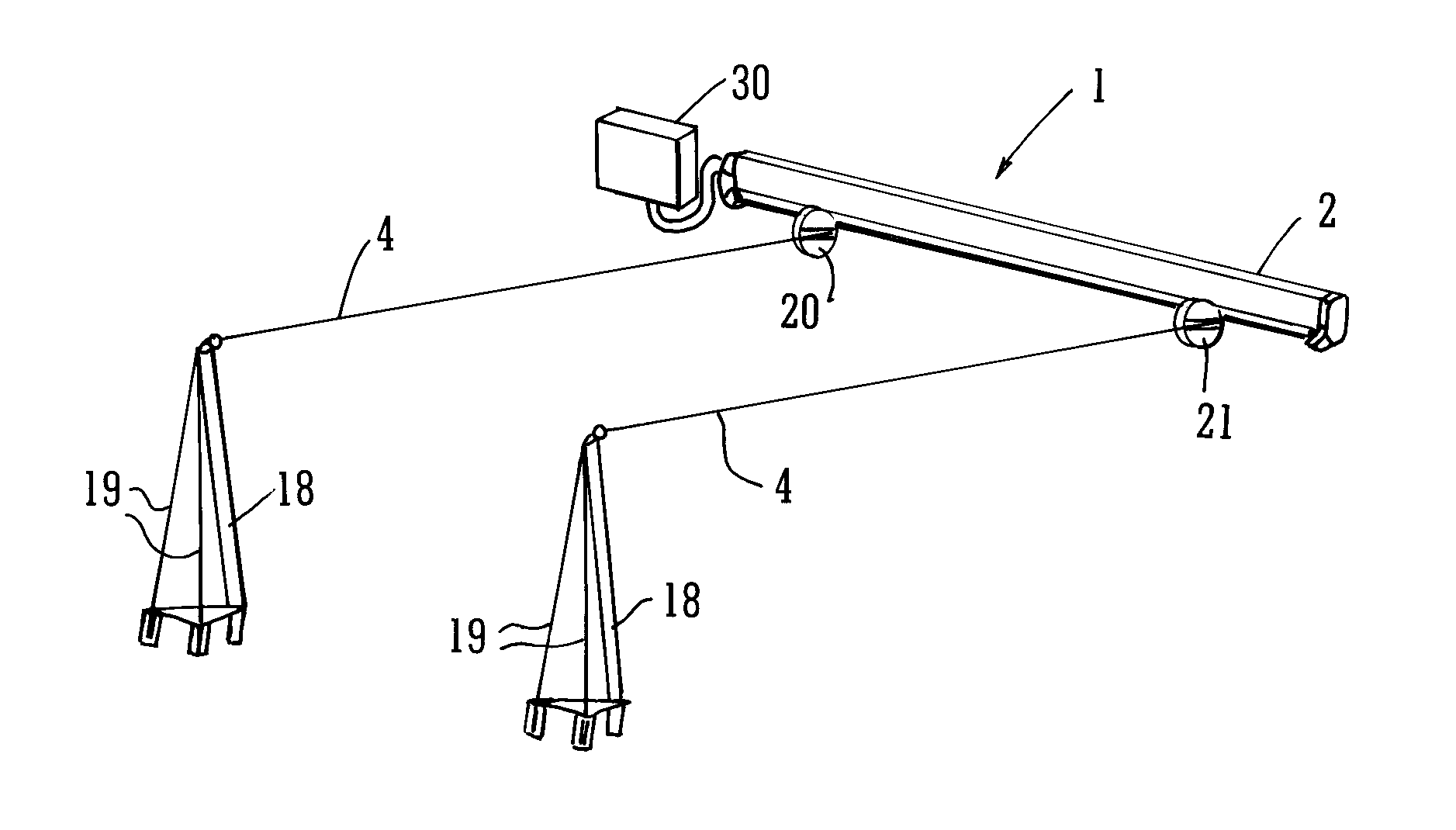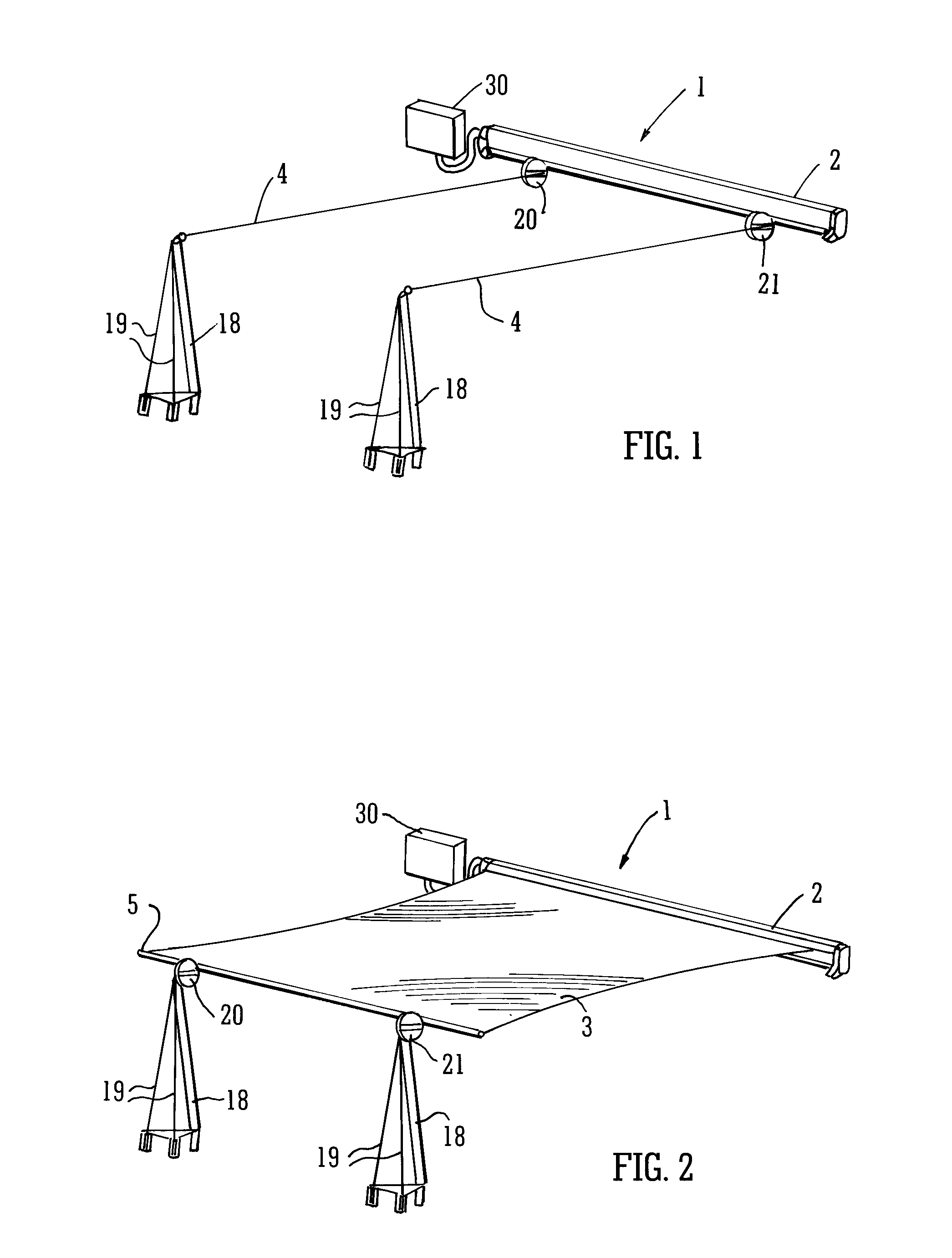Retractable awning
a technology of awnings and awnings, which is applied in the field of retractable awnings, can solve the problems of reducing the service life of awnings, so as to increase the need for tension, increase the transverse tension, and increase the screen tension
- Summary
- Abstract
- Description
- Claims
- Application Information
AI Technical Summary
Benefits of technology
Problems solved by technology
Method used
Image
Examples
first embodiment
[0106]Further embodiments of the invention will now be described with reference to FIGS. 11, 12 and 13. Many elements of these further embodiments are the same as those of the first embodiment described above and will therefore not be described further.
[0107]FIG. 11 shows a second embodiment of the invention. In this embodiment the screen 3 is not deployed and retracted along fixed parallel cables 4 as in the first embodiment, but instead the cables 4 are attached at one end to the corners of the front (leading edge) of the screen 3 and at the other end are attached to winches 200. In the embodiment shown in FIG. 11, the winches 200 are located at ground level and the cables 4 are routed from the top of the support poles 18 through the inside of the poles to the bottom where they exit the poles 18 and are connected to the winches 200. Other arrangements will work equally well. The poles 18 are angled slightly from the vertical and away from the rest of the canopy (in the direction i...
fourth embodiment
[0112]FIG. 13 shows the invention. This embodiment is similar to the first embodiment of the invention in that the screen 3 is drawn out along fixed cables 4 by means of motor-driven roller units 210 attached to those cables 4. However, in this arrangement, the cables 4 are splayed apart in the direction of extension of the screen 3 by placing the support poles 18 at the front (extension) end of the awning further apart than the attachment points of the cables 4 at the rear (retraction) end of the awning. As in the second and third embodiments, this splaying of the cables 4 creates transverse tension as well as longitudinal tension in the screen 3. The screen 3 is attached to the roller units 210 by means of short connecting wires or rods 215 so as to accommodate the changing angle (and thus the changing transverse tension) as the screen 3 is deployed. Although no tension sensor is shown in FIG. 13, a tension sensor could easily be incorporated into the connecting wires 215 or into ...
PUM
 Login to View More
Login to View More Abstract
Description
Claims
Application Information
 Login to View More
Login to View More - R&D
- Intellectual Property
- Life Sciences
- Materials
- Tech Scout
- Unparalleled Data Quality
- Higher Quality Content
- 60% Fewer Hallucinations
Browse by: Latest US Patents, China's latest patents, Technical Efficacy Thesaurus, Application Domain, Technology Topic, Popular Technical Reports.
© 2025 PatSnap. All rights reserved.Legal|Privacy policy|Modern Slavery Act Transparency Statement|Sitemap|About US| Contact US: help@patsnap.com



